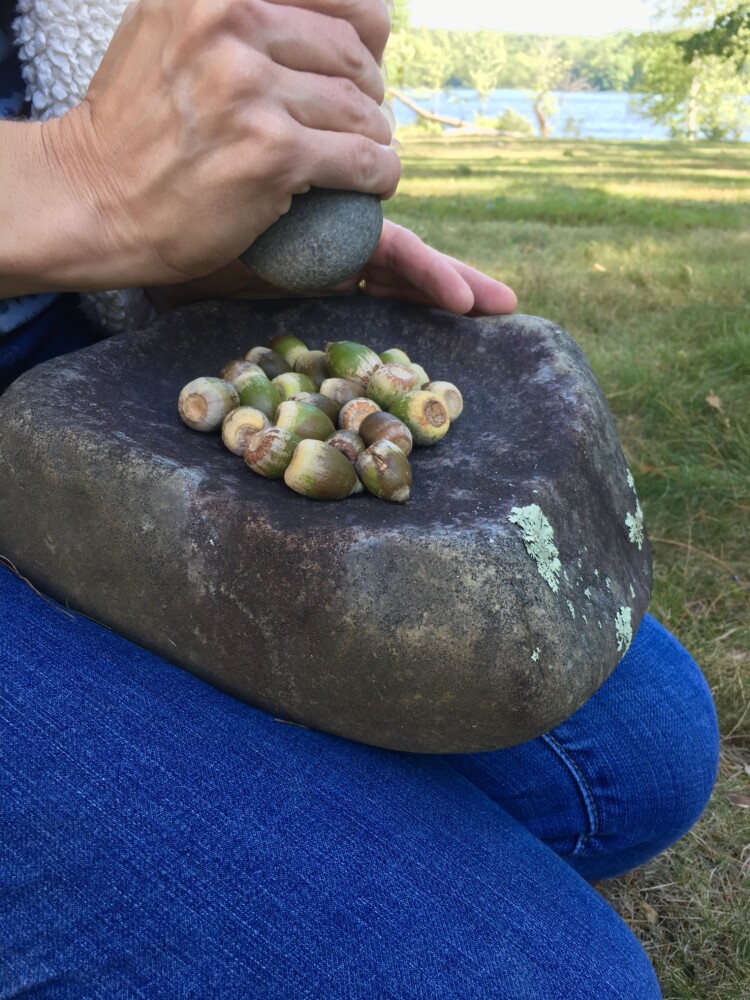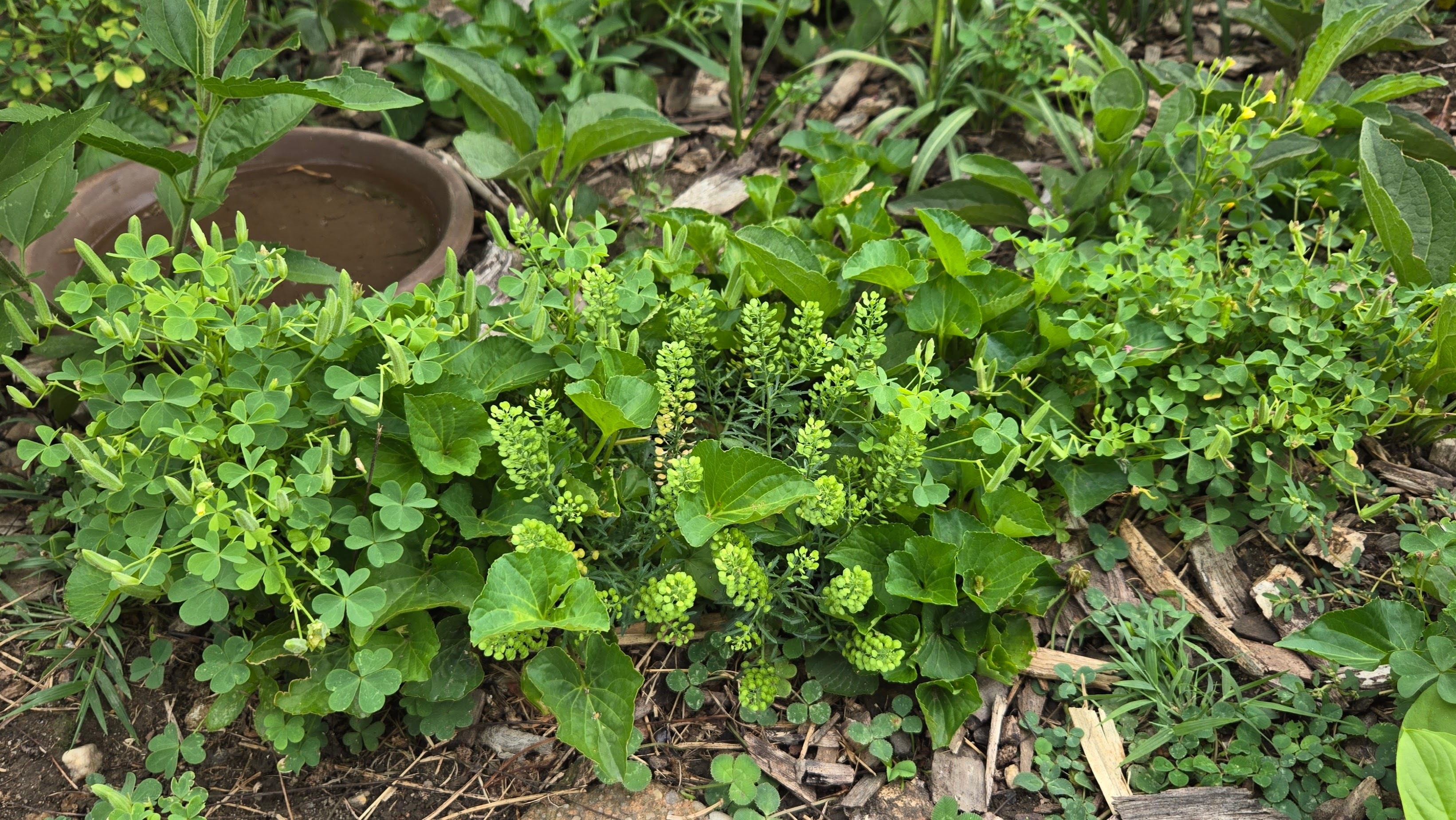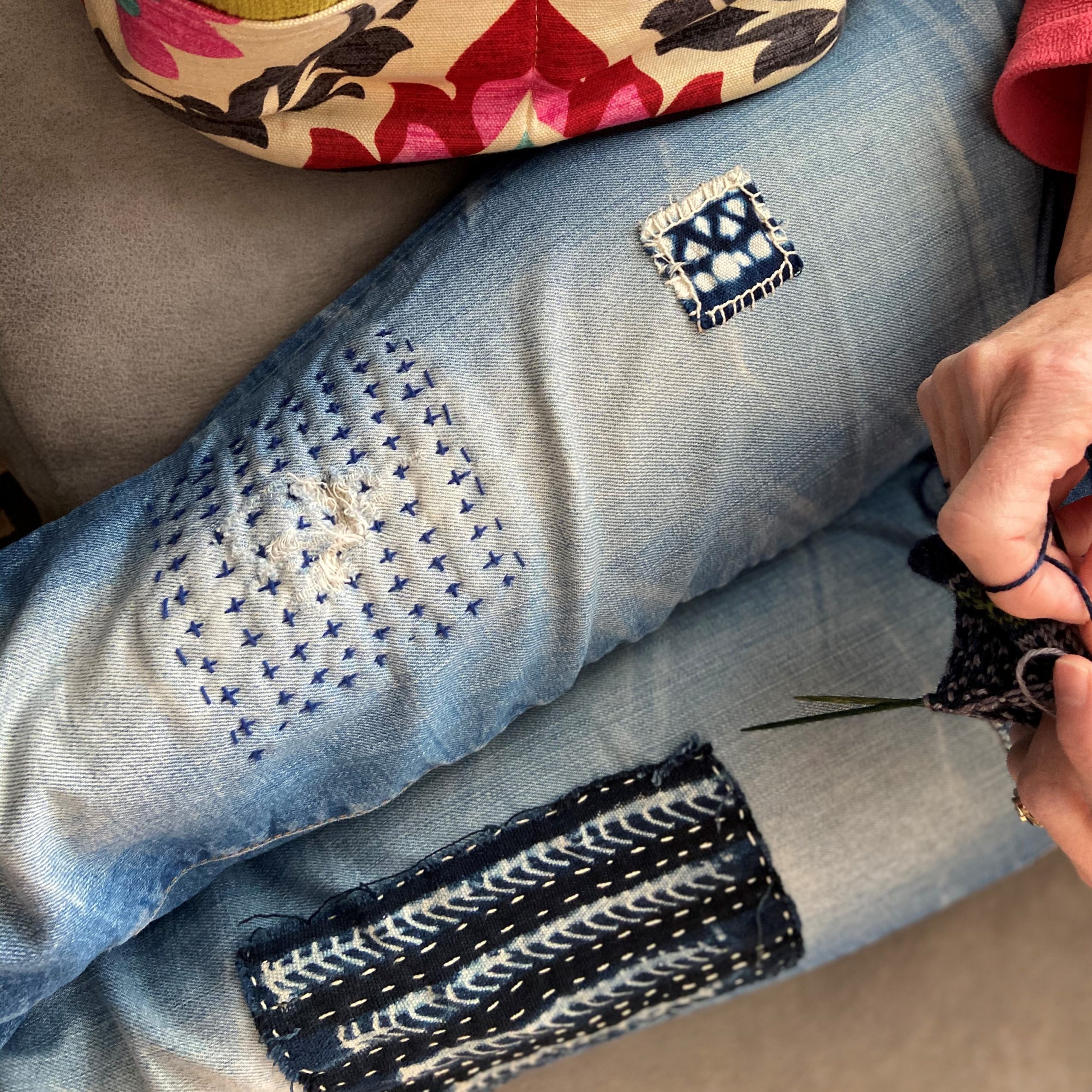 quercus
1w ago
•
100%
quercus
1w ago
•
100%
Wow, same here! I hadn't watched the show either and that clip had me blubbering.
 quercus
1w ago
•
100%
quercus
1w ago
•
100%
Vincent van Gogh since seeing his Sunflowers 🌻 series in 3rd grade art class, especially after learning in my 20s that we share migraine disease. Louis Wain is a close second with "Cat's Nightmare" (my profile picture) being one of my faves.
Also, I went down a 90s kid nostalgia trip recently and watched some FernGully clips. Anyone remember that movie, specifically Batty's rap? It was about vivisection 🤯 I was tempted to post it in the music community lol.
 quercus
3w ago
•
100%
quercus
3w ago
•
100%
Written information from Europeans goes back four centuries, like the account from the 1600s about cultivated food forests. The archeological finds about consumption in general are much older.
 www.pressherald.com
www.pressherald.com
>Plenty of scholars have described nuts as a crucial food source for the Wabanaki people, and early colonial records indicate the same. In 1607, colonists from the Popham Colony described the Casco Bay islands as “overgrown with woods very thick as oaks, walnut, pine trees & many other things growing as sarsaparilla, hazle nuts & whorts in abundance.” > >Ethnobotanist Nancy Asch Sidell documents that charred beechnut remains that are more than 5,000 years old have been discovered “preserved in a hearth feature” in central Maine. At the archaelogical site on the well-documented Norridgewock village on the Kennebec River – a Wabanaki town destroyed by the British in 1724 – researchers have recovered evidence of hazelnut and beechnut consumption, Sidell reports. > >“The use and importance of nuts is as ancient as the people themselves,” Kavasch told me. “The trees they come from were so sacred and important. But many of our European ancestors couldn’t see the forest for the trees. They weren’t thinking of it as a nut forest.”
 quercus
4w ago
•
100%
quercus
4w ago
•
100%
Also in Baltimore, home of Vegan SoulFest!
Food is culture 💚 and the vegan food here feels like Baltimore. It's awesome that other cities are doing the same.
Wild Ones: [Lifetime Honorary Director Lorrie Otto (1919-2010)](https://wildones.org/about/honorary-directors/lorrie-otto/)
 www.youtube.com
www.youtube.com
Institution: MIT Lecturer: Julian Beinart University Course Code: 4.241J Subject: #architecture #urbanstudies #finearts #socialscience Year: Spring 2013 Description: This course covers theories about the form that settlements should take and attempts a distinction between descriptive and normative theory by examining examples of various theories of city form over time. Case studies will highlight the origins of the modern city and theories about its emerging form, including the transformation of the nineteenth-century city and its organization. Through examples and historical context, current issues of city form in relation to city-making, social structure, and physical design will also be discussed and analyzed. Course materials can be found on the [MIT OpenCourseWare](https://ocw.mit.edu/courses/4-241j-theory-of-city-form-spring-2013/) website.
 quercus
1mo ago
•
100%
quercus
1mo ago
•
100%
On the post image, Knowing Animals Podcast: Episode 58: Animal Rights in Palestine and Israel with Esther Alloun
This episode of Knowing Animals features Esther Alloun from the University of Wollongong. We discuss her article ‘’That’s the beauty of it, it’s very simple!’ Animal rights and settler colonialism in Palestine–Israel’ which appeared in the journal Settler Colonial Studies in December 2017.

Source with pictures of example soft landing gardens, plant lists tailored to the [North American Eastern Temperate Forests](https://bplant.org/region/8) can be found: https://www.pollinatorsnativeplants.com/softlandings.html --- Oaks are universally the top keystone trees that support moths and butterflies. Across the United States, more than 940 types of caterpillars feed on oaks (Quercus). Top genera: Oak, Willow, Cherry, Pines, Poplar Lepidoptera in image: Great oak dagger moth, Luna moth, Red-banded hairstreak, Eastern buck moth --- Many of the moths and butterflies that feed on oak trees must complete their life cycles in the duff and leaf litter (i.e., soft landings) near or beneath the tree, or below ground. Lepidoptera in image: Blinded sphinx moth, Juvenal's duskywing, Hog moth --- Creating soft landings under the dripline of oaks (as well as any other tree) invites all kinds of beneficial insects to complete their life cycles in your yard. A number of beneficial insects such as fireflies, bumble bees, beetles, and lacewings need soft landings to survive. Lepidoptera in image: Edwards hairstreak, Skiff moth, Pink-striped oakworm --- Planting intentional soft landings under keystone trees builds healthy soil, provides food for songbirds and pollinators, sequesters more carbon than turf grass, and reduces time spent mowing. Other ways to support insects that spend a phase of their life cycle beneath trees include eliminating landscape fabric and decreasing mowing to reduce soil compaction. --- DON'T FORGET TO LEAVE THE LEAVES UNDER YOUR TREES!
 press.uchicago.edu
press.uchicago.edu
>Over the centuries, physicians have placed migraine in various positions along the mind / body spectrum. Headache experts currently consider migraine a somatic disorder rooted in the brain. But this is a break from the past. Up until thirty years ago, doctors primarily viewed migraine as having both a psychological and a somatic basis. In what follows, I trace these historical understandings of migraine from the nineteenth-century understanding of migraine as a disorder of upper-class intellectuals, to the influential concept of the “[migraine personality](https://www.migraineagain.com/the-birth-of-the-migraine-personality/)” in mid-twentieth-century America, and finally to contemporary theories of comorbidity. [...] >I pay close attention to how, at each historical turn, biomedical discourses come to enact and reinforce cultural narratives about gender, class, and pain via the encoded inclusion of moral character. After all, the credibility and the legitimacy of a disorder — and how much we, as a society, choose to invest in its treatment — is intimately tied to how we perceive the moral character of the patient.
 quercus
2mo ago
•
100%
quercus
2mo ago
•
100%
Mr. Trash Wheel is pretty cool:
>FreeSewing is open source software to generate bespoke sewing patterns, loved by home sewers and fashion entrepreneurs alike. Mastodon instance: [FreeSewing.social](https://freesewing.social)
 quercus
2mo ago
•
100%
quercus
2mo ago
•
100%
I've read that in the southeastern states, Spanish moss was used like wool, also for thread and upholstery. But it doesn't get nearly as cold down there 😆
 quercus
2mo ago
•
100%
quercus
2mo ago
•
100%
I've seen folks online use Virginia creeper and pokeberry to dye fabrics, a soft green and vibrant purple respectively. I'd love to take a crack at them on cotton, maybe even a natural tie dye!
The US Forest Service has a chart with plants and their corresponding colors. I wonder if there's a dye community on lemmy 🤔

Source: [sarumomorchella on deviantart](https://www.deviantart.com/sarumomorchella/art/Solarpunk-fashion-955948721)
 quercus
3mo ago
•
100%
quercus
3mo ago
•
100%
From May 2023 in Reuters: Some 25 types of mammals died in latest bird flu outbreak
 quercus
3mo ago
•
100%
quercus
3mo ago
•
100%
🥳
 quercus
3mo ago
•
100%
quercus
3mo ago
•
100%
Do y'all have a community for socialism on this instance? I miss the veganarchism subreddit so much :(
 quercus
3mo ago
•
100%
quercus
3mo ago
•
100%
The local cottontail raised her litter in my yard and the family didn't care for them, other than using them as a hangout spot. They did eat all the Virginia spiderwort and there's a bunch of violet stems around with no leaves, but mostly they stick to the plantains (Plantago sp.) in the lawn.
I had no idea deer lived in the city until I started doing this. Sometimes I'll catch one sleeping in my backyard which is a surreal sight. They munched the sunchokes, hazelnut, and chokeberry to the ground, but all are bouncing back.
 quercus
3mo ago
•
100%
quercus
3mo ago
•
100%
Most of the flowers are divisions of plants, some volunteers and others I got as plugs in summer 2022. I decided to start small and expand over time. The coneflower was four plants last spring which I divided into 12, then into about 30 this spring. Rose milkweed and late boneset are just as prolific.
I have spread some seeds around and others have blown in. The groundcover in the second photo is all volunteer.
The mulch was leftover from a chipdrop. I used it to make the beds look "intentional" when everything was sparse and muddy back in February :) The plan is for everything to grow so dense that I won't need to mulch it again.

Huffin' the flowers has been a huge stress relief here in the [Southeastern USA Plains](https://bplant.org/region/33). The shrub on the right is buttonbush (Cephalanthus occidentalis). Flowers are: orange coneflower (Rudbeckia 'goldsturm'), sweet Joe-Pye (Eutrochium purpureum), anise hyssop (Agastache foeniculum), pokeberry (Phytolacca americana), and catmint (Nepeta × faassenii). Closer to the ground there's: wood sorrel (Oxalis sp.), three seeded mercury (Acalypha rhomboidea) and blue violets (Viola sororia). The empty space has wild stawberry (Fragaria virginiana) slowly creeping and a young little bluestem (Schizachyrium scoparium). The image below shows the opening of the rain garden where the runoff enters. Plants are 4 - 5 inches max. Here there's: Virginia pepper (Lepidium virginicum), blue violet (Viola sororia), wood sorrel (Oxalis sp.), nimblewill (Muhlenbergia schreberi), prostrate spurge? (Euphorbia sp.).  Also seen: white clover, creeping cinquefoil, and Bermuda grass.
 quercus
3mo ago
•
100%
quercus
3mo ago
•
100%
Around here, it's spotted lanternflies. The almost glee some have for squashing them is disheartening. I get why they do it, believe me, but I've encountered little to no zoomed out perspective that these little dudes didn't choose to be here.
To really go off the deep end... the spotted lanternfly's favorite tree, Ailanthus altissima, is just trying to do what its ancestors have done for millennia. Not saying these trees shouldn't be removed, but they also didn't choose to be here.
Of these things we speak venom and deem trash. Though, this attitude seems pervasive in how western culture treats the other in general.
 quercus
3mo ago
•
100%
quercus
3mo ago
•
100%
They don’t want most of the crap people plant trying to be Eco friendly anyways or so the landscape architect told me.
The research of entomologist, Dr. Doug Tallamy, and his team at the University of Delaware have identified 14% of native plants (the keystones) support 90% of butterfly and moth lepidoptera species. The research of horticulturist Jarrod Fowler has shown that 15% to 60% of North American native bee species are pollen specialists who only eat pollen from 40% of native plants.
 quercus
3mo ago
•
100%
quercus
3mo ago
•
100%
Dense plantings help keep it at bay. For flowers and grasses, cut in half the recommended plant spacing that you'll find on gardening sites.
I have orange coneflower bordering a pocket prairie, planted one foot apart (center of plant to center of plant). Bermuda grass grows around the edge, but rarely enters it.
 theanarchistlibrary.org
theanarchistlibrary.org
>In short, this is a proposal for an abolition of compulsory work for all beings. It involves rewilding at least 75% of the Earth with guidance from local and Indigenous communities, and ensuring that the remainder of the planet “abolish[es] the wage system, and live[s] in harmony with the Earth” as proposed by the Industrial Workers of the World (IWW) (2021).

["Tarot & Acid Communism" Live at Tenderbooks in London](https://www.youtube.com/watch?v=hP-gC-jalJY) >The launch party for 'The Philosopher's Tarot' at Tenderbooks in London on November 23, 2022. > >Acid Horizon's first live event extends Mark Fisher's concept of 'acid communism' through prominent figures featured in the work of the podcast.
 quercus
4mo ago
•
100%
quercus
4mo ago
•
100%
It is done :)
 quercus
4mo ago
•
100%
quercus
4mo ago
•
100%
I don't mind teaming up if you're still interested, it'd be nice to have some help.
 quercus
4mo ago
•
100%
quercus
4mo ago
•
100%
Neat! No problem, thank y'all for all you do :)
>n her 2016 Edward W. Said lecture, Naomi Klein examines how Said's ideas of racial hierarchy, including Orientalism, have been the silent partners to climate change since the earliest days of the steam engine, continuing to present day decisions to let entire nations drown and others warm to lethal levels. The lecture looks at how Said’s bold universalist vision might form the basis for a response to climate change grounded in radical inclusion, belonging and restorative justice.
>The Association of Space Explorers reached out to their fellow astronauts to pass on a simple message of solidarity, hope and collaboration to combat climate change and reach our political leaders during such a crucial time.
 theanarchistlibrary.org
theanarchistlibrary.org
[Simone Weil](https://iep.utm.edu/weil/) (1909 — 1943) was a French philosopher, labor activist, ascetic and mystic. The author of the introduction, Gustave Thibon, shares the circumstances of his meeting Weil: >In June 1941 the Reverend Father Perrin, a Dominican friend then living at Marseilles, sent me a letter which I do not happen to have kept but which ran more or less as follows: ‘There is a young Jewish girl here, a graduate in philosophy and a militant supporter of the extreme left. She is excluded from the University by the new laws and is anxious to work for a while in the country as a farm hand. I feel that such an experiment needs supervision and I should be relieved if you could put her up in your house.’ Thibon later shares how he gained possession of Weil's writings which would become *Gravity and Grace*: >I saw her for the last time at the beginning of 1942. At the station she gave me a portfolio crammed with papers, asking me to read them and to take care of them during her exile. As I parted from her I said jokingly, in an attempt to hide my feelings: ‘Goodbye till we meet again in this world or the next!’ She suddenly became serious and replied: ‘In the next there will be no meeting again.’ She meant that the limits which form our ‘empirical self’ will be done away with in the unity of eternal life. I watched her for a moment as she was disappearing down the street. We were not to meet again: contacts with the eternal in the time order are fearfully ephemeral. --- The Philosophize This! podcast has a [four part introductory series](https://www.philosophizethis.org/podcast/episode-172-attention-weil) on Simone Weil (with transcripts). There are [short videos](https://www.youtube.com/watch?v=IwqEgYRrGhU) from this series on their clips channel on YouTube. The Talk Gnosis podcast [hosted a discussion](https://www.youtube.com/watch?v=n1WR3VBidfw) about Weil's work featuring two poets.
>17 years ago, I was amazed by the incredibly loud pulsing chorus of cicadas in my backyard. I improvised this tune that I had to name "The Cicada Reel". I recorded the tune a year later on "Journey to the Heartland" (Maggie’s Music, 2005). And the cicadas are back in full force. Shortly after I recorded this video, they hit 93 dB’s. So here it is again: The Cicada Reel, played on a Dusty Strings D670 with dampers.
>*Ways of Seeing* is a 1972 BBC four-part television series of 30-minute films created chiefly by writer John Berger and producer Mike Dibb. Berger's scripts were adapted into a book of the same name. The series and book criticize traditional Western cultural aesthetics by raising questions about hidden ideologies in visual images. The series is partially a response to Kenneth Clark's *Civilisation* series, which represents a more traditionalist view of the Western artistic and cultural canon. CW: Around the 20 minute mark, footage of an execution is briefly shown. Related essays can be found on ways-of-seeing.com
Interesting tidbit: the creator of this video was [arrested in the 1990s during the Satanic panic](https://www.justinsledge.com/faq). Silvia Federici's *Caliban and the Witch* is licensed under the Creative Commons Attribution-NonCommercial 4.0 International License. Full text can be found on: [libcom.org](https://libcom.org/article/caliban-and-witch-silvia-federici) | [theanarchistlibrary.org](https://theanarchistlibrary.org/library/silvia-federici-caliban-and-the-witch) | [gitbooks.io](https://anarchivists.gitbooks.io/caliban/content/)

